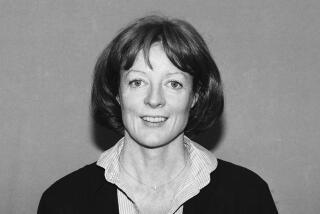Review: Barbara T. Smith’s photocopies reveal artist in transition
In 1965, Barbara T. Smith wanted to make a lithograph. When she was rejected from prominent print studio Gemini G.E.L., she leased a Xerox machine instead, installing it in her dining room. Thus began an intense engagement with the printmaking technology of the 20th century.
Smith photocopied nearly everything she could get her hands on: flowers, family photos, food, magazine clippings, her own body in various states of undress. She made illustrated poems, multi-panel grids, many, many books and book-like sculptures. The work, on view for the first time in 40 years at the Box, is highly personal, almost diaristic, but it also shows an acute awareness of the formal and conceptual qualities of its then-novel medium. It is, in short, a feminist art historian’s treasure trove: a woman pushing the bounds of a new technology to reveal herself to herself, and now, to us. It is a must-see exhibition.
Smith, who later became well-known as a performance artist, was struggling with the decline of her marriage and dissatisfaction with her “perfect” suburban life. Her fierce attachment to her children, however, is evident throughout the show. She obsessively photocopied their images, even pressing her daughter’s face to the photocopier glass. In one series she copies and recopies a photo of her son at successively smaller sizes. In the resulting grid we see the image getting less distinct as it shrinks away to almost nothing. The work explores the nature of the medium — what happens when you make copies of copies?—but it also poignantly diagrams a fear of growing distant from one’s child.
The exhibition also reveals a woman exploring her own sexuality, as Smith brazenly exposed her breasts and pubic region to the glare of the copier, creating images that are both erotic and disturbing in their almost mammographic starkness. There’s an urgency and perhaps a desperation to the pressing and flattening of flesh against the glass. These images are not unlike a David Hammons body print, intimate and immediate, and so different from those created through the distant, untouchable lens of the camera.
Smith also used the surface in more abstract ways, drawing shapes in flour, cornmeal and rice directly on the glass. The resulting images take a sidelong jab at heroic “male” traditions of abstract painting, using “female” domestic foodstuffs instead of paint. They are also a reminder of Smith’s interest in the relationship between art and reality. Art should be a part of the world directly, not a remote commentary on it. In this one sees the seeds of her performance work, in which her body and the bodies of others became the medium.
Accordingly, Smith called the Xeroxed books she made “Coffins,” a moniker that evokes not only the process of putting something (or someone) behind you — permanently — but also contrasts with the live performance work that was to come. In her 1981 performance “Birthdaze,” Smith dramatized her radical transformation from sheltered society wife to liberated Tantric sex practitioner. The Xerox work reveals a woman on the cusp of this huge transition as she struggles with her own identity, relationships and place in the world. The echo chamber of the photocopy, with its cascade of decaying reflections, was perhaps the perfect medium.
The Box, 805 Traction Ave., (213) 625-1747, through March 23. Closed Sunday through Tuesday. www.theboxla.com
More to Read
The biggest entertainment stories
Get our big stories about Hollywood, film, television, music, arts, culture and more right in your inbox as soon as they publish.
You may occasionally receive promotional content from the Los Angeles Times.










